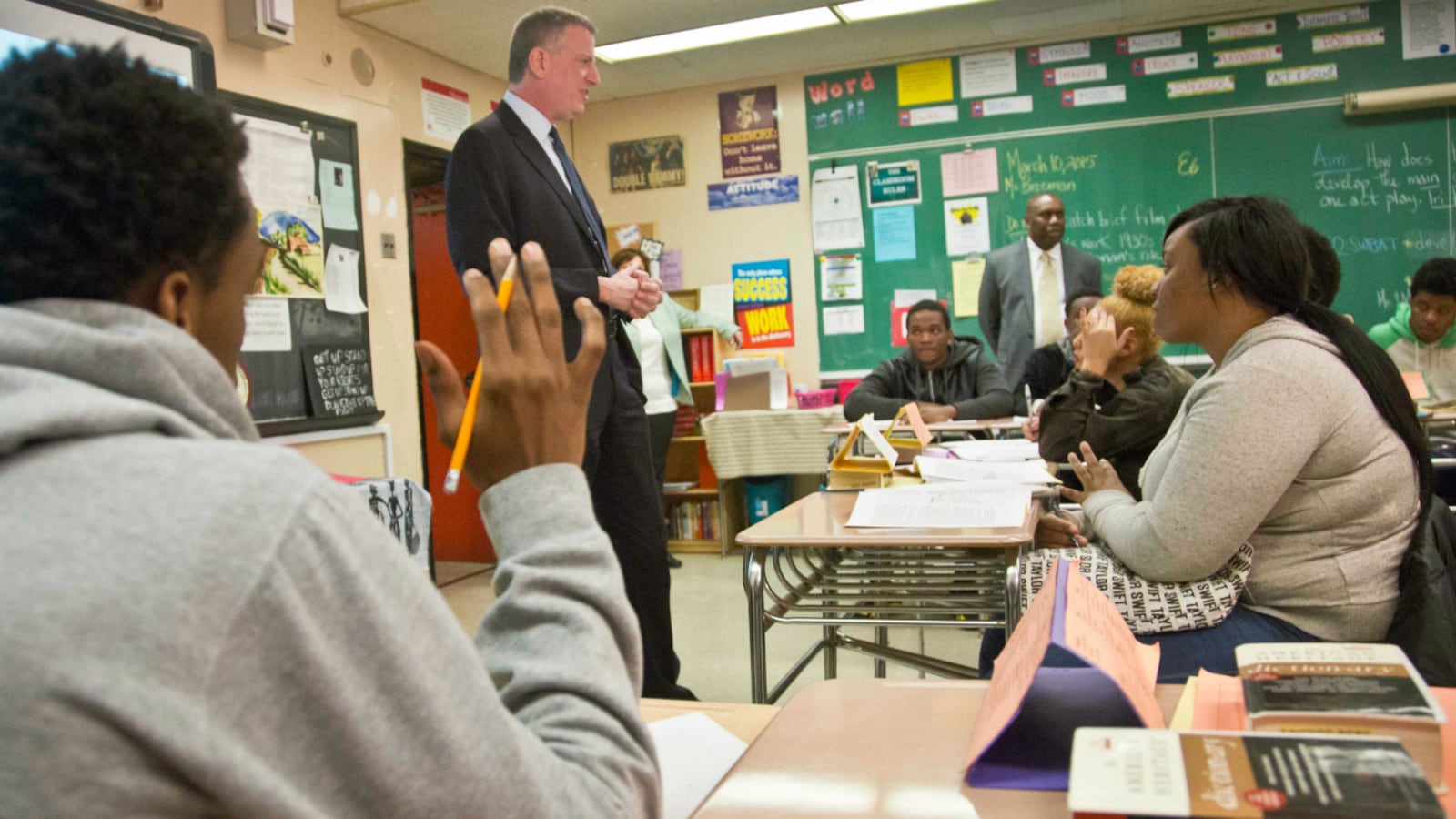Classes have started, but dozens of low-performing New York City schools still do not know what goals they must meet this year to avoid state takeover, with city officials promising to have those targets in place sometime this fall.
This latest round of goal-setting adds to a long period of improvement planning and uncertainty for the schools, most of which are also part of the city’s “Renewal” program for struggling schools. The 50 schools in both programs will have to incorporate the new state goals, and potentially feedback from community hearings set to begin Monday, into plans that city and school officials spent much of the last school year developing.
“Bang, here are we are two weeks into school, and we’re starting over,” said a person who works in a Renewal high school who spoke on the condition of anonymity. “It’s going to further confuse things, right when we started to solidify what we’re shooting for.”
The city was late in submitting state-mandated improvement plans for the schools last year, and did not give schools individual Renewal goals until near the end of this school year. Still, by summer break, Renewal schools had goals and tentative improvement plans in place.
Now, the schools may need to revise those plans to reflect the additional goals they will receive for the receivership program, which derives from a state law passed in June to spur districts to move with greater urgency to improve their struggling schools. Of the city’s 62 receivership schools, 55 have two years to meet their goals in order to avoid takeover by an outside receiver — a nonprofit group or an individual selected by the city schools chief — while seven schools have just one year.
Within that short timeframe, the city and state are still finalizing how the schools’ progress will be judged.
State education officials sent the city a list of possible goals during the first week of school. The city has until Oct. 2 to choose at least 10 metrics from the list for each school, which the state must approve. The categories include student-performance measures like graduation rates and state exam results, and school-wide metrics such as attendance, suspension, and teacher-turnover rates.
The receivership schools that are also in the city’s Renewal program already have four city goals that use similar measures: graduation rates, test results, and attendance, and the city has promised to give them two additional goals for metrics like parent involvement.
Under the receivership program, the schools will now have several more goals. And while city officials said they expect the city and state metrics to be similar, it’s possible that schools’ goals for graduation rates, test results, and other such measures will change.
The city “is working to align the receivership indicators it selects to the Renewal targets to the maximum extent possible,” said state education department spokeswoman Jeanne Beattie. She added that schools will be able to change their improvement plans “to reflect any revised goals.”
John Starkey, principal of the Bronx High School of Business, which is in both the receivership and Renewal programs, said he hopes the school’s targets for the two initiatives are “the same or in the same ballpark.”
“That would help us to accomplish them without having two distinct systems,” he said.
What is clear is that the schools’ fates will hinge on students’ academic performance in the coming years.
In order to exit the state takeover program, schools must first be removed from a state list of low-performing schools that is used for federal accountability purposes, Assistant State Education Commissioner Ira Schwartz told district leaders in a webinar Friday. And removal from that list requires two years of growth as measured by test results and graduation rates — meaning that the earliest schools will be free of the threat of state takeover is two years. (In a blow to many districts across the state that had large numbers of students boycott this year’s state exams, at least 95 percent of students at a school had to have taken the tests for it to be eligible for removal from the accountability list.)
Beginning Monday, every receivership school will hold a public meeting by the end of the month to explain the program and its requirements. Each school must also form a “community engagement team” to come up with school-improvement recommendations and solicit ideas from the public.
The team’s recommendations will be attached to the improvement plans that the city will submit to the state. For each school, the city must say which recommendations it adopted and provide an explanation for any recommendations it did not accept.
Starkey, the Bronx principal, said he recently held a meeting with about 25 families where he explained the receivership program. While the improvement process can be confusing and stressful, Starkey said he is trying to use it as an opportunity to enlist families in the school’s turnaround.
“We’re trying to turn something a little complicated and a little political into something that can be a teachable moment for the community,” he said.


